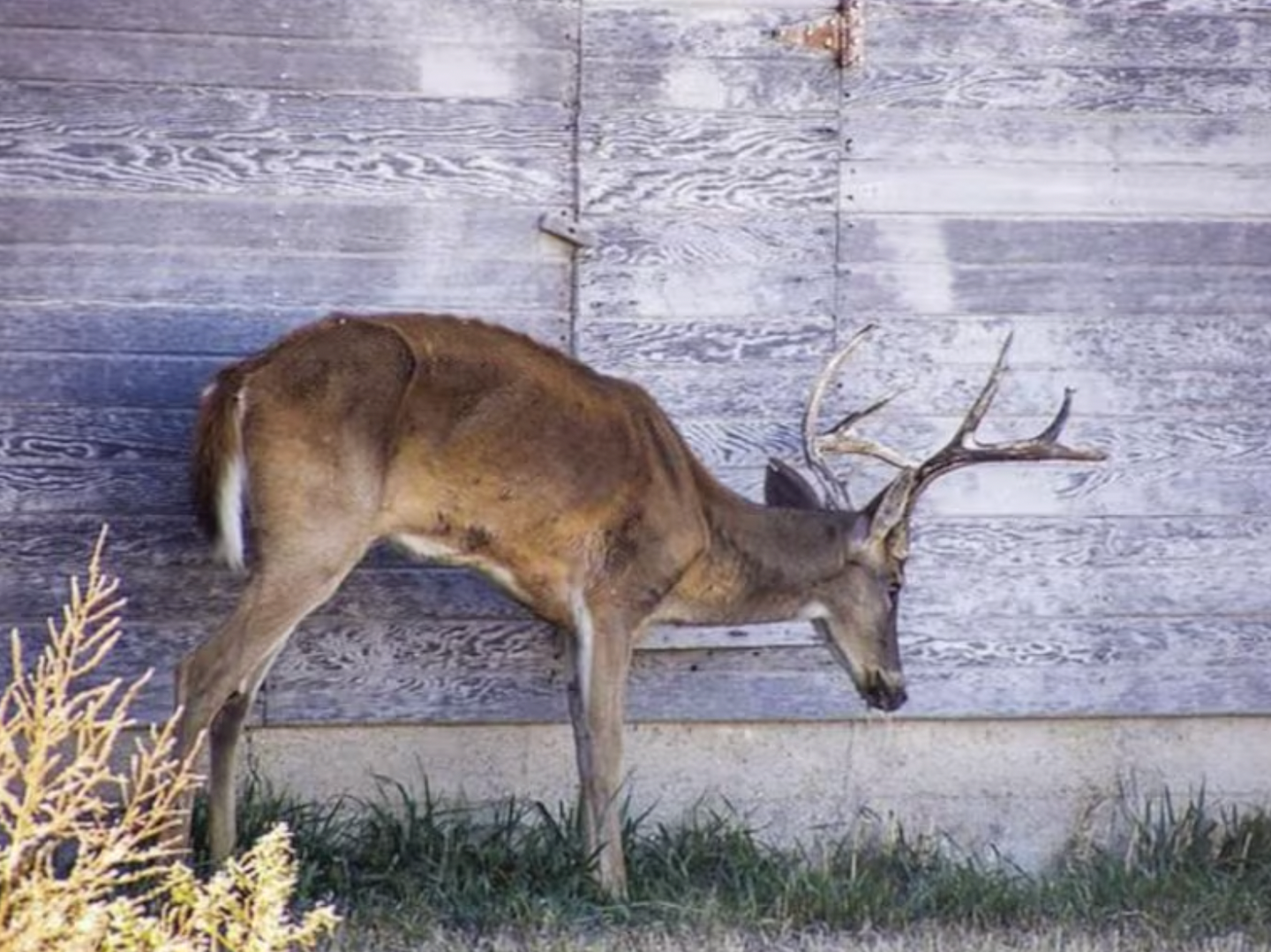Study: Hunters Die After Consuming CWD-Infected Venison

This file photo from the Kansas Department of Wildlife and Parks shows whitetail buck racked with Chronic Wasting Disease at a research facility in the Sunflower State. Kansas Department of Parks and Wildlife
Chronic Wasting Disease (CWD) has been sweeping through North American deer herds since it was first detected at a captive cervid facility in Wyoming in 1967. In all the decades since, there’s never been a documented and confirmed instance of the always-fatal neurological disease jumping the species barrier, from cervids into humans. According to a new study, published last week in the journal Neurology, that long-discussed and frequently dreaded transmission of CWD from deer into human beings might have actually occurred in 2022.
Learn how to subscribe to the new Field & Stream magazine here!
The study title alone is enough to perk the ears of any hunter who’s followed the CWD epidemic over the years. “Two Hunters from the Same Lodge Afflicted with Sporadic CJD,” it reads. “Is Chronic Wasting Disease to Blame?”
The authors go on to highlight “a cluster of Creutzfeldt-Jakob disease (CJD) cases after exposure to chronic wasting disease (CWD)-infected deer.” Those findings, they say, are “suggestive of potential prion transmission from CWD-infected deer to humans.”
CJD is better known for its association with Mad Cow Disease. Like CWD, mad cow disease is transmitted in cows through mis-folded proteins called prions. And like CWD, it causes a cascade of brain-related maladies that ultimately lead to death in the bovines unlucky enough to contract it. Mad Cow Disease has been shown to transmit to human beings through the consumption of infected beef. When the disease manifests in people, it’s referred to as Creutzfeldt-Jakob disease.
The recent paper describes an unnamed hunter who contracted CJD after regular consumption of venison from deer infected with Chronic Wasting Disease. “In 2022, a 72-year-old man with a history of consuming meat from a CWD-infected deer population presented with rapid-onset confusion and aggression,” it reads.
Those are classic symptoms of Creutzfeldt-Jakob disease. “Despite aggressive symptomatic treatment of seizures and agitation, the patient’s condition deteriorated and he died within a month of initial presentation,” the study goes on to state. “The diagnosis was confirmed postmortem as sporadic CJD.”
Given the patients history of consuming CWD-infected deer meat, the authors suggest “a possible novel animal-to-human transmission of CWD.” They also studied the case of one of the hunters friends who ate venison from the same deer population. That person recently died from Creutzfeldt-Jakob disease as well, the authors says.
The Neurology study doesn’t reveal where the individuals who contracted CJD lived and hunted, but the Center for Disease Control and Prevention (CDC) says that CWD has been detected in 32 U.S. state to date. The three states with the largest distribution of CWD-infected deer by county are Kansas, Nebraska, and Wisconsin. The disease is also prevalent in Canadian deer herds.
Related: Kentucky Deer Tests Positive for State’s First-Known Case of Chronic Wasting Disease
The authors of the April 9 study are quick to point out that causation for the recent CJD cases in hunters remains unproven. But their findings underscore the grave threats of consuming CWD-infected meat, and the importance of having deer meat tested for CWD by your state fish and game agency whenever possible.
“Further investigation into the potential risks of consuming CWD-infected deer and its implications for public health,” the study concludes. “Surveillance and further research are essential to better understand this possible association.”
The post Study: Hunters Die After Consuming CWD-Infected Venison appeared first on Field & Stream.
Articles may contain affiliate links which enable us to share in the revenue of any purchases made.
